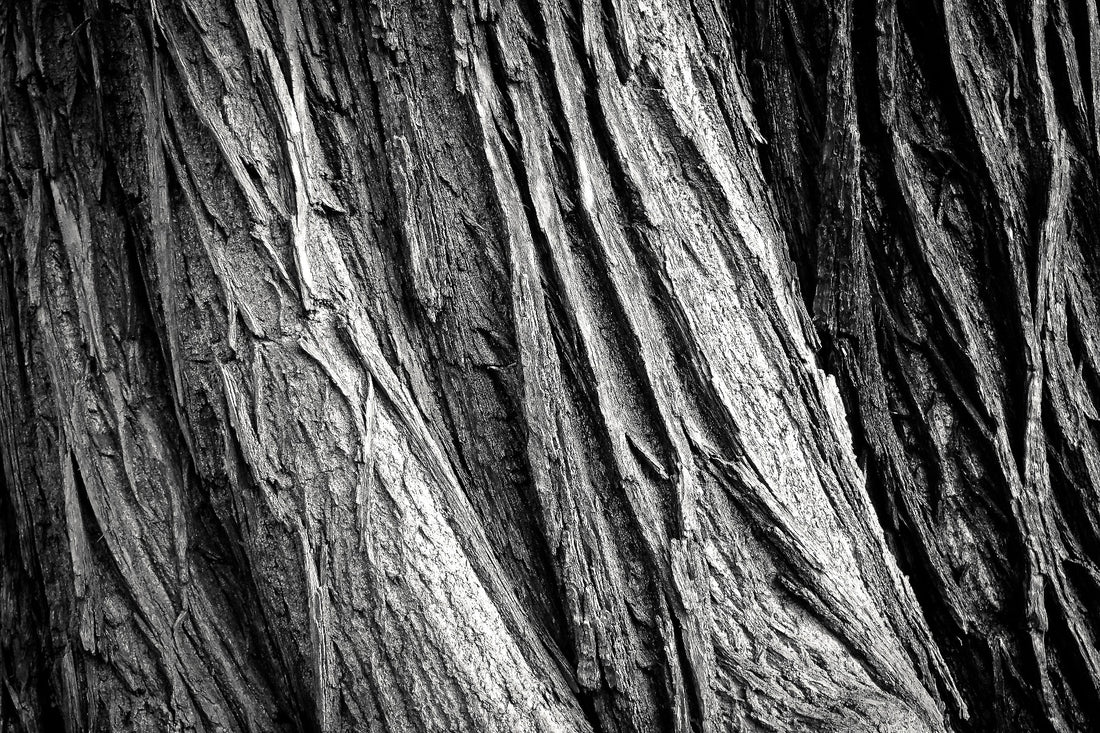Natural, solid hardwood has always been regarded as a high value raw material. Its intrinsic strength and durability coupled with its natural beauty continue to make it a sought-after material. High grade lumber such as Cherry, Maple, Walnut, and Ash is strong, sturdy, and resistant to both wear and indentations. Products constructed in these high-quality hardwoods are made to withstand the test of time. With proper care, solid hardwood furniture will last for generations, while veneered furniture gets one little nick and the veneer can start to lift, effectively ruining the entire piece.
Additionally, whereas products constructed from engineered woods are cheaper and can be made to look just as natural as solid wood, low-quality products constructed entirely of veneers contain various chemicals, some of which have been found to be hazardous to your health. Nature doesn’t require harsh, toxic substances to create something durable. Choosing artfully crafted, solid hardwood pieces means freedom from dangerous off-gassing. It means reducing our ecological footprint, by minimizing our landfill contribution every time a low-quality piece needs replacing. Solid hardwood furniture, such as that crafted by Copeland Furniture, is the definition of high quality and will endure for many, many years.
Benefits of American Hardwoods for Furniture
Haiku’s beautiful, solid hardwood pieces crafted by Copeland Furniture feature high quality lumber that is sustainably harvested within 500 miles of the manufacturing facility. These premier woods offer the strength and durability only high-grade American hardwoods can provide.
Cherry: A medium density wood, Cherry is found to be the number one preferred wood year after year! While most customers opt for Natural Cherry, this species is renowned among woodworkers for its ability to accept stains beautifully. A new furniture piece crafted in 100% solid Cherry might arrive in a very light color, and that is because the color changes and darkens as a result of light exposure. After about 3-6 months the end result is the rich, reddish tone Cherry is known for.
Maple: Maple is a heavy wood characterized by straight grain or clusters of curls. It demonstrates a high resistance to abrasion, wear, and indentation for exceptional longevity. Its natural color ranges from cream to light brown and accepts stains beautifully to achieve a beautiful finish.
Walnut: Black Walnut is America’s own exotic wood. A rarer species, Walnut grows more slowly and not as large as other species making it less readily available than other woods such as Cherry and Maple. But is the beauty of Black Walnut that makes it so desirable. A dense wood with a uniform to highly figured grain, the color can range from light gray-brown to dark purplish-brown. Copeland doesn’t stain pieces crafted in Walnut because doing so would mar its rich tones and subtle golden undertones.
Ash: A member of the olive family, Ash exhibits open pores and pronounced graining. The straight grain with coarse uniform texture is bold and distinctive and adds allure to this beautiful wood. Ash also demonstrates exceptional strength relative to its weight. This species possesses excellent woodworking properties and accepts stains well. Ash sapwood is light-colored to nearly white and the heartwood varies from grayish or light brown, to pale yellow streaked with brown.
Hardwood vs Veneers: Why Hardwood is Superior
When it comes to veneers, the veneer itself is not the problem. It is what lies beneath the veneer that can be problematic. For the sake of saving on cost, many manufacturers opt for either Medium Density Fiberboard (MDF) or Particleboard. MDF is an engineered wood composed of wood fibers, wax, and resin glue which is then formed into panels through the application of high temperature and pressure. While easy to work with, MDF contains significant amounts of formaldehyde- a known human carcinogen- and will off gas harmful toxins into the air. Those who handle and work with the material face additional problems as the wood fiber particles may also cause allergies, as well as lung and eye irritation.
Veneers can also have plywood substrates, and while plywood is likewise an engineered wood, it is composed of layers or piles of wood veneer that are glued to form sheets. In the past, the production of plywood included the use of inexpensive urea-formaldehyde glues which resulted in dangerous off-gassing; however, many craftsmen have turned away from those dangerous materials and opted for higher quality glues denoted by an “E0” rating for zero emissions. While Copeland Furniture is known as a solid wood specialist, the use of veneers is occasionally a necessity. When that is the case, high grade, veneered plywood with an “E0” rating is used.
Jovanna, Haiku Designs Staff

